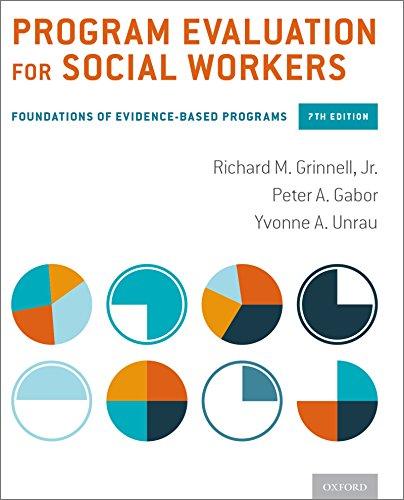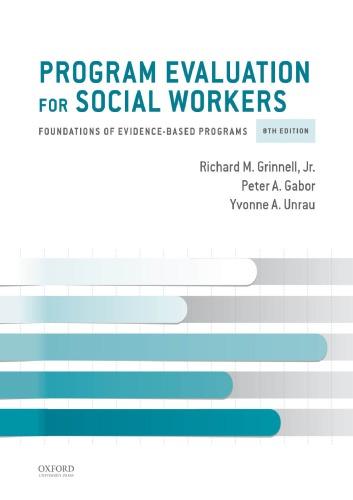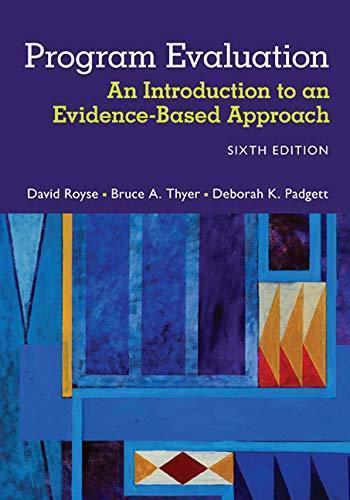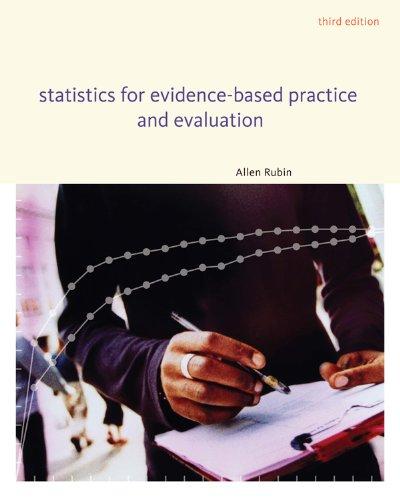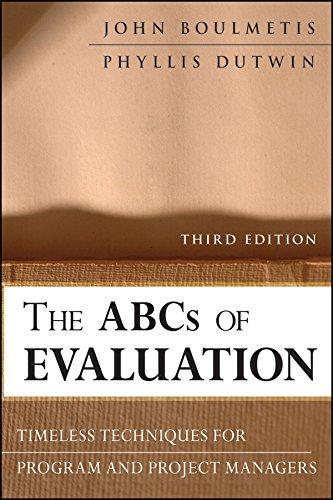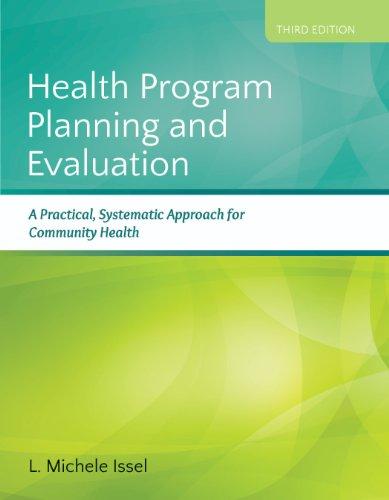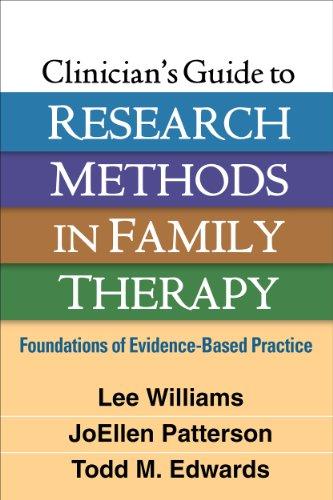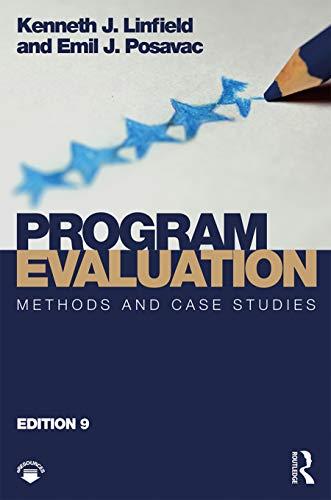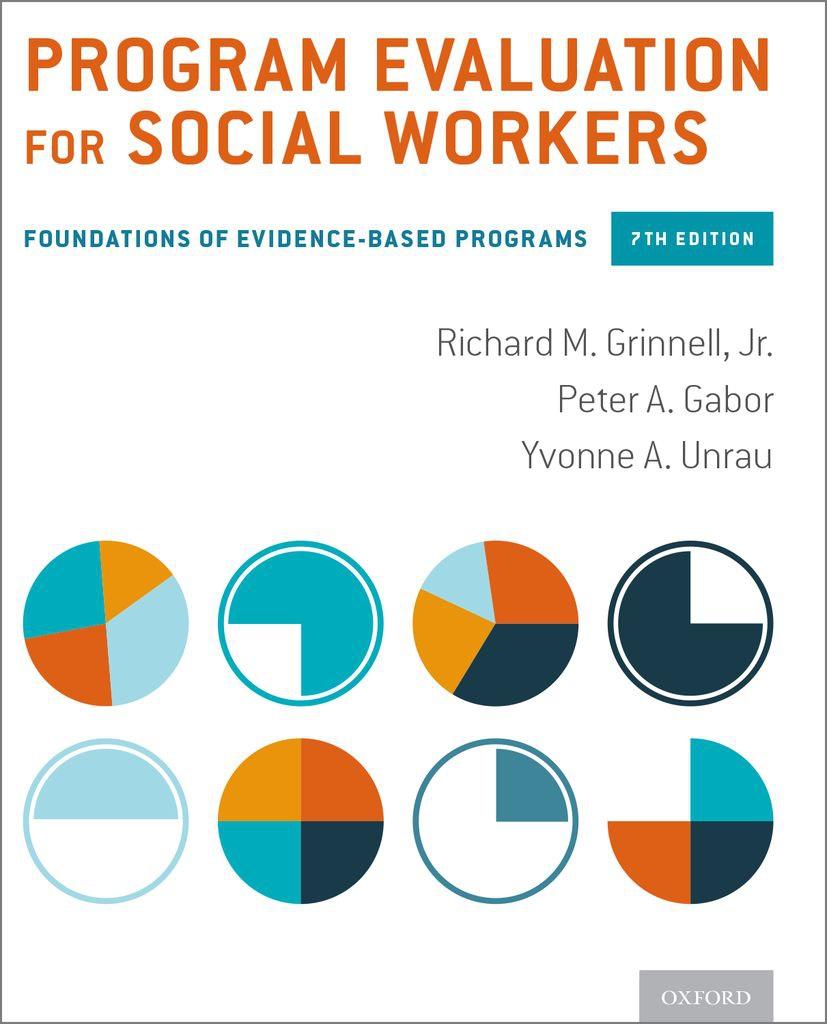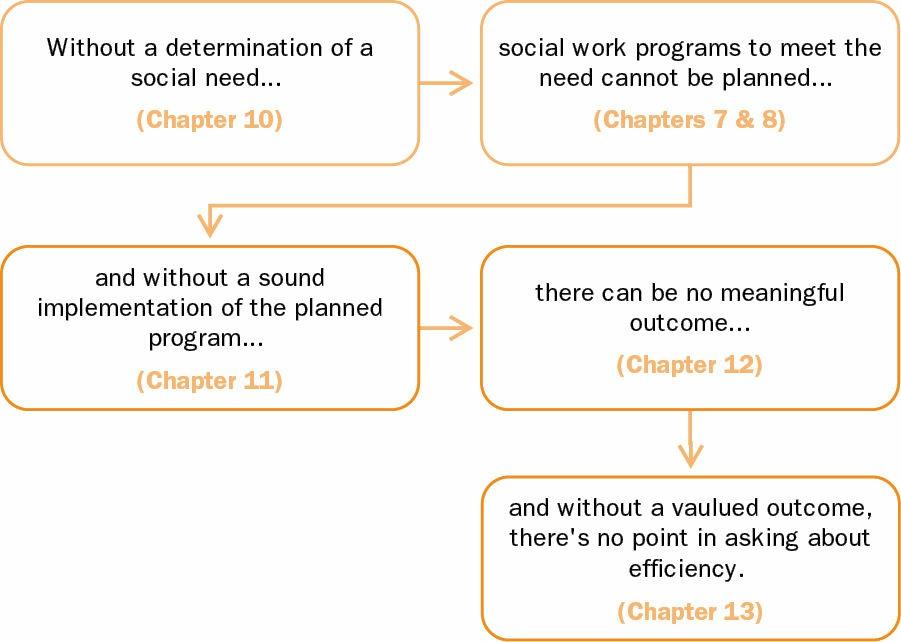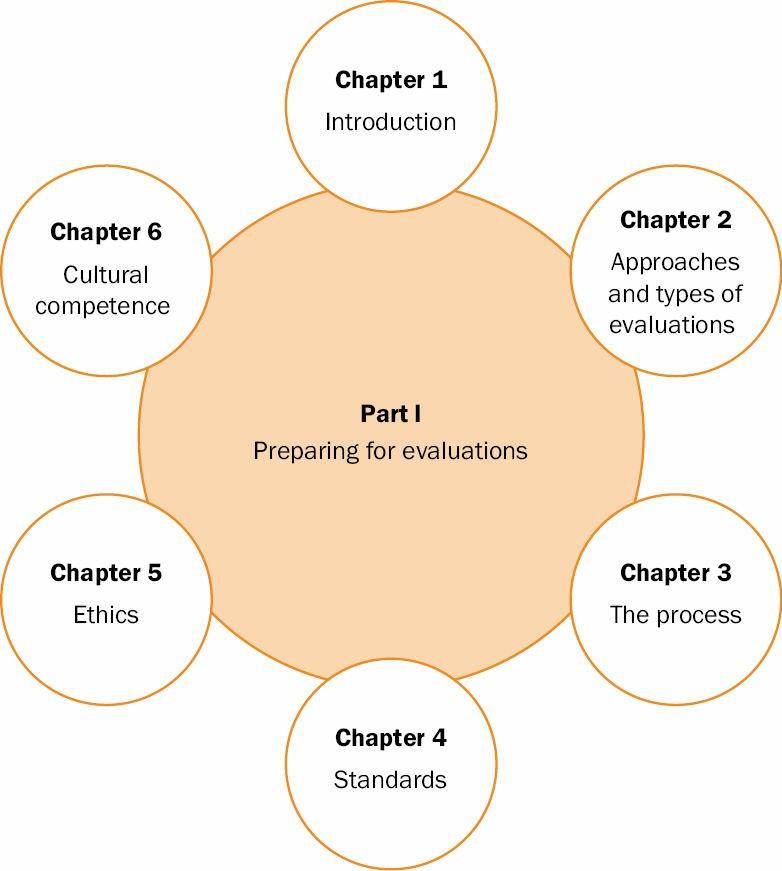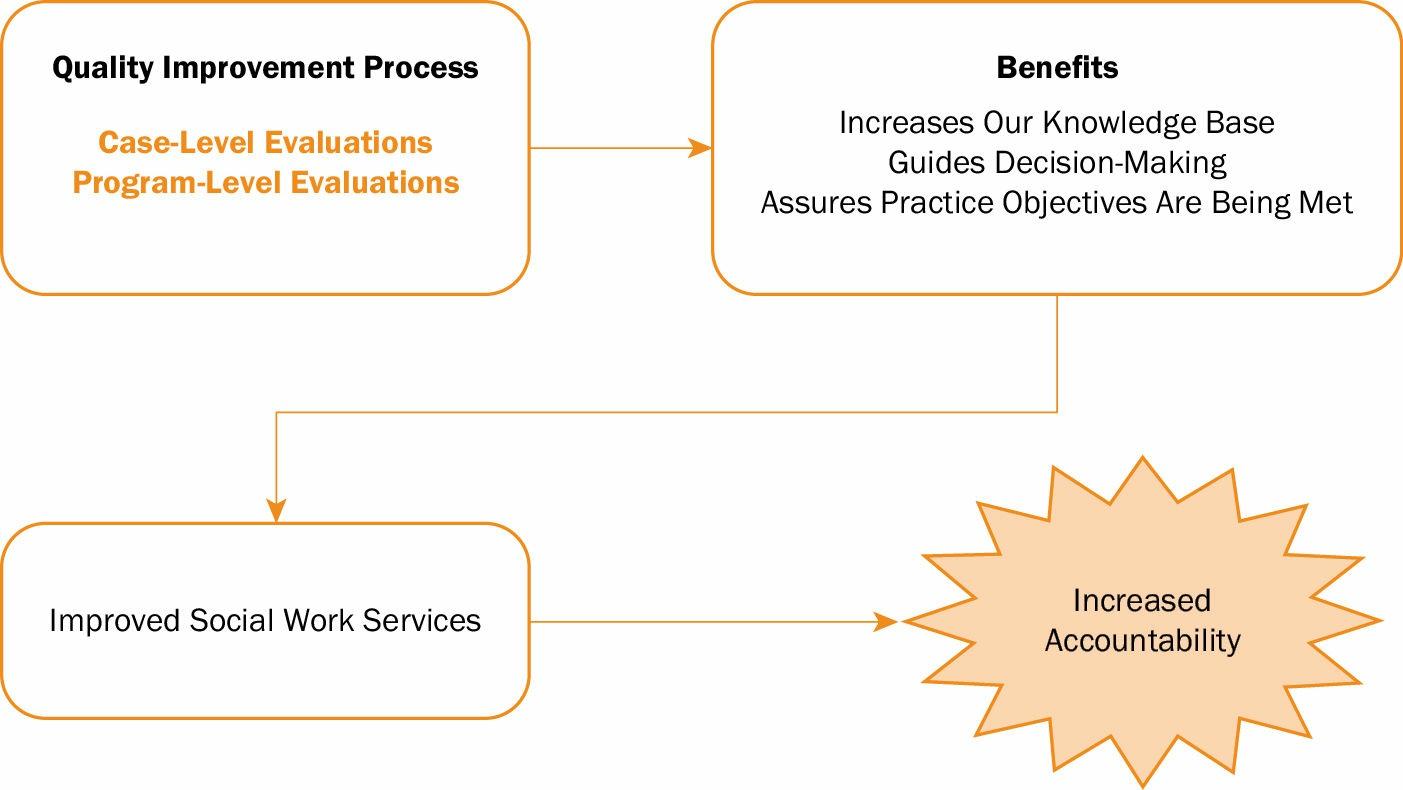Visit to download the full and correct content document: https://ebookmass.com/product/program-evaluation-for-social-workers-foundations-of -evidence-based-programs-7th-edition-ebook-pdf/
More products digital (pdf, epub, mobi) instant download maybe you interests ...
Program Evaluation for Social Workers: Foundations of Evidence-Based Programs Richard M. Grinnell Jr
https://ebookmass.com/product/program-evaluation-for-socialworkers-foundations-of-evidence-based-programs-richard-mgrinnell-jr/
Program Evaluation: An Introduction to an EvidenceBased Approach 6th Edition
https://ebookmass.com/product/program-evaluation-an-introductionto-an-evidence-based-approach-6th-edition/
Statistics for Evidence-Based Practice and Evaluation (SW 318 Social Work Statistics) – Ebook PDF Version
https://ebookmass.com/product/statistics-for-evidence-basedpractice-and-evaluation-sw-318-social-work-statistics-ebook-pdfversion/
Empowerment Series: Psychopathology: A Competency based Assessment Model for Social Workers 4th Edition, (Ebook PDF)
https://ebookmass.com/product/empowerment-series-psychopathologya-competency-based-assessment-model-for-social-workers-4thedition-ebook-pdf/
Principles
of
Research and Evaluation for Health Care Programs
https://ebookmass.com/product/principles-of-research-andevaluation-for-health-care-programs/
The ABCs of Evaluation: Timeless Techniques for Program and Project Managers (Research Methods for the Social Sciences Book 56) 3rd Edition, (Ebook PDF)
https://ebookmass.com/product/the-abcs-of-evaluation-timelesstechniques-for-program-and-project-managers-research-methods-forthe-social-sciences-book-56-3rd-edition-ebook-pdf/
Health Program Planning and Evaluation 3rd Edition, (Ebook PDF)
https://ebookmass.com/product/health-program-planning-andevaluation-3rd-edition-ebook-pdf/
Clinician’s Guide to Research Methods in Family Therapy: Foundations of Evidence Based Practice 1st Edition, (Ebook PDF)
https://ebookmass.com/product/clinicians-guide-to-researchmethods-in-family-therapy-foundations-of-evidence-basedpractice-1st-edition-ebook-pdf/
Program Evaluation: Methods and Case Studies 9th Edition, (Ebook PDF)
https://ebookmass.com/product/program-evaluation-methods-andcase-studies-9th-edition-ebook-pdf/
Preface
PARTI:PREPARINGFOREVALUATIONS
1.TowardAccountability
TheQualityImprovementProcess Case-LevelEvaluations Program-LevelEvaluations
Myth PhilosophicalBias
Fear(EvaluationPhobia)
ThePurposeofEvaluations IncreaseOurKnowledgeBase GuideDecision-MakingatAllLevels AssureThatClientObjectivesAreBeingMet AccountabilityCanTakeManyForms
ScopeofEvaluations
Person-In-EnvironmentPerspective Example:You’retheClient Program-In-EnvironmentPerspective Example:You’retheSocialWorker Research≠Evaluation
Data≠Information
Definition
Summary
2 ApproachesandTypesofEvaluations
TheProjectApproach
CharacteristicsoftheProjectApproach
TheMonitoringApproach CharacteristicsoftheMonitoringApproach AdvantagesoftheMonitoringApproach
FourTypesofEvaluations NeedsAssessment ProcessEvaluations
OutcomeEvaluations
EfficiencyEvaluations
InternalandExternalEvaluations
Summary
3 TheProcess
TheProcess
Step1:EngageStakeholders WhyStakeholdersAreImportanttoanEvaluation
TheRoleofStakeholdersinanEvaluation
STEP2:DescribetheProgram
UsingaLogicModeltoDescribeYourProgram
Step3:FocustheEvaluation TypesofEvaluations
NarrowingDownEvaluationQuestions
Step4:GatheringCredibleData
Step5:JustifyingYourConclusions
Step6:EnsuringUsageandSharingLessonsLearned Summary
4 Standards
TheFourStandards Utility Feasibility Propriety Accuracy StandardsVersusPolitics WhenStandardsAreNotFollowed Summary
5 Ethics
CodeofEthics
Step3:FocusingtheEvaluation
Step3A:RefineEvaluationQuestionThroughtheLiterature
Step3B:SelectinganEvaluationDesign
Step3C:SpecifyingHowVariablesAreMeasured
Step4:GatheringData
Step4A:SelectingEvaluationParticipants
Step4B:SelectingaDataCollectionMethod
Step4C:AnalyzingtheData
Step6:EnsureUsageandShareLessonsLearned RevealingNegativeFindings
SpecialConsiderations InternationalResearch ComputerandInternet-BasedResearchGuidance StudentsasSubjects/StudentsasResearchers Summary
6 CulturalCompetence
OurVillage WorkingwithStakeholderGroups YourEvaluationTeam
TheImpactofCulture
BridgingtheCultureGap CulturalAwareness
InterculturalCommunication
CulturalFrameworks
OrientationtoData
Decision-Making
Individualism
Tradition
PaceofLife
CulturallyCompetentEvaluators
DevelopCulturalAwareness
DevelopInterculturalCommunicationSkills
DevelopSpecificKnowledgeabouttheCulture
DevelopanAbilitytoAdaptEvaluations
Summary
PARTII:DESIGNINGPROGRAMS
7 TheProgram
TheAgency MissionStatements Goals
TheProgram NamingPrograms
AnAgencyVersusaProgram DesigningPrograms
Evidence-BasedPrograms WritingProgramGoals PreparingforUnintendedConsequences ProgramGoalsVersusAgencyGoals ProgramObjectives
Knowledge-BasedObjectives Affect-BasedObjectives
BehaviorallyBasedObjectives WritingProgramObjectives
Specific(S) Measurable(M) Achievable(A) Realistic(R) TimePhased(T) Indicators PracticeObjectives Example:Bob’sSelf-Sufficiency PracticeActivities
LogicModels PositionsYourProgramforSuccess SimpleandStraightforwardPictures ReflectGroupProcessandSharedUnderstanding ChangeOverTime Summary
8 TheoryofChangeandProgramLogicModels
ModelsandModeling ConceptMaps
TwoTypesofModels:OneLogic Examples
LogicModelsandEvaluationDesign Limitations
ModelsBeginwithResults
LogicModelsandEffectiveness
BasicProgramLogicModels
AssumptionsMatter
KeyElementsofProgramLogicModels
NonlinearProgramLogicModels
HiddenAssumptionsandDose
BuildingaLogicModel
FromStrategytoActivities
ActionStepsforaProgramLogicModel
CreatingYourProgramLogicModel
Summary
PARTIII:IMPLEMENTINGEVALUATIONS
9 PreparingforanEvaluation
PlanningAhead
Strategy1:WorkingwithStakeholders Strategy2:ManagingtheEvaluation Strategy3:Pilot-Testing Strategy4:TrainingDataCollectionStaff Strategy5:MonitoringProgress
Strategy6:ReportingResults InterimReporting
DisseminatingFinalResults
Strategy7:DevelopingaPlan Strategy8:DocumentingLessonsLearned Strategy9:LinkingBacktoyourEvaluationPlan
Summary
10.NeedsAssessments
WhatareNeedsAssessments?
DefiningSocialProblems
SocialProblemsMustBeVisible
DefiningSocialNeeds
TheHierarchyofSocialNeeds
FourTypesofSocialNeeds
PerceivedNeeds
NormativeNeeds
RelativeNeeds
ExpressedNeeds
SolutionstoAlleviateSocialNeeds
StepsinDoinganeedsAssessment
Step3A:FocusingtheProblem Example
Step4A:DevelopingNeedsAssessmentQuestions
Step4B:IdentifyingTargetsforIntervention
EstablishingTargetParameters
SelectingDataSources(Sampling)
Step4C:DevelopingaDataCollectionPlan ExistingReports
SecondaryData
IndividualInterviews
GroupInterviews
TelephoneandMailSurveys
Step4D:AnalyzingandDisplayingData
QuantitativeData
QualitativeData
Step6A:DisseminatingandCommunicatingEvaluationResults
Summary
11 ProcessEvaluations
Definition
Example
Purpose
ImprovingaProgram’sOperations GeneratingKnowledge EstimatingCostEfficiency
Step3A:DecidingWhatQuestionstoAsk
Question1:WhatIstheProgram’sBackground?
Question2:WhatIstheProgram’sClientProfile?
Question3:WhatIstheProgram’sStaffProfile?
Question4:WhatIstheAmountofServiceProvidedtoClients?
Question5:WhatAretheProgram’sInterventionsandActivities?
Question6:WhatAdministrativeSupportsAreinPlace?
Question7:HowSatisfiedAretheProgram’sStakeholders?
Question8:HowEfficientIstheProgram?
Step4A:DevelopingDataCollectionInstruments
EasytoUse
AppropriatetotheFlowofaProgram’sOperations ObtainingUserInput
Step4B:DevelopingaDataCollectionMonitoringSystem
DeterminingNumberofCasestoInclude DeterminingTimestoCollectData SelectingaDataCollectionMethod(s)
Step4C:ScoringandAnalyzingData
Step4D:DevelopingaFeedbackSystem
Step6A:DisseminatingandCommunicatingEvaluationResults
Summary
12 OutcomeEvaluations
Purpose Uses
ImprovingProgramServicestoClients GeneratingKnowledgefortheProfession
Step3:SpecifyingProgramObjectives PerformanceIndicatorsVersusOutcomeIndicators
Step4A:MeasuringProgramObjectives Pilot-TestingtheMeasuringInstrument
Step4B:DesigningaMonitoringSystem
HowManyClientsShouldBeIncluded? WhenWillDataBeCollected? HowWillDataBeCollected?
Step4C:AnalyzingandDisplayingData
Step4D:DevelopingaFeedbackSystem
Step6A:DisseminatingandCommunicatingEvaluationResults
Summary
13.EfficiencyEvaluations
CostEffectivenessVersusCost–Benefit
WhentoEvaluateforEfficiency
Step3A:DecidingonanAccountingPerspective TheIndividualProgram’sParticipants’Perspective TheFundingSource’sPerspective
ApplyingtheProcedure
Step3B:SpecifyingtheCost–BenefitModel LookingatCosts
LookingatBenefits
ApplyingtheProcedure
Step4A:DeterminingCosts
DirectCosts
IndirectCosts
ApplyingtheProcedure
Step4B:DeterminingBenefits
ApplyingtheProcedure
Step4C:AdjustingforPresentValue
ApplyingtheProcedure
Step4D:CompletingtheCost–BenefitAnalysis
ApplyingtheProcedure
Cost-EffectivenessAnalyses
ApplyingtheProcedure
AFewWordsaboutEfficiency-FocusedEvaluations
Summary
PARTIV:MAKINGDECISIONSWITHDATA
14 DataInformationSystems
Purpose
Workers’Roles AdministrativeSupport CreatingaCultureofExcellence
EstablishinganOrganizationalPlan
CollectingCase-LevelData
CollectingProgram-LevelData
CollectingDataatClientIntake
CollectingDataatEachClientContact
CollectingDataatClientTermination
CollectingDatatoObtainClientFeedback
ManagingData
ManagingDataManually
ManagingDatawithComputers
WritingReports
ALooktotheFuture
Summary
15 MakingDecisions
UsingObjectiveData
Advantages
Disadvantages
UsingSubjectiveData
Advantages
Disadvantages
MakingCase-LevelDecisions
Phase1:EngagementandProblemDefinition
Phase2:PracticeObjectiveSetting
Phase3:Intervention
Phase4:TerminationandFollow-Up
MakingProgram-LevelDecisions
ProcessEvaluations
OutcomeEvaluations
OutcomeDataandProgram-LevelDecision-Making
AcceptableResults
MixedResults
InadequateResults
Benchmarks
ClientDemographics
ServiceStatistics
QualityStandards
Feedback
ClientOutcomes
Summary
PARTV:EVALUATIONTOOLKIT
ToolA HiringanExternalEvaluator
PrincipleDuties
Knowledge,Skills,andAbilities
OverarchingItems
Step1:EngageStakeholders
Step2:DescribetheProgram
Step3:FocustheEvaluationDesign
Step4:GatherCredibleData
Step5:JustifyConclusions
Step6:EnsureUseandShareLessonsLearned
ToolB WorkingwithanExternalEvaluator
NeedforanExternalEvaluator WorkingwithExternalEvaluators
SelectinganEvaluator
ManaginganExternalEvaluator
ToolC ReducingEvaluationAnxiety
Stakeholders’Anxiety Evaluators’Anxiety InteractiveEvaluationPracticeContinuum
EvaluationCapacityBuildingFramework
DualConcernsModel
ToolD ManagingEvaluationChallenges
EvaluationContext
EvaluationLogistics
DataCollection
DataAnalysis
DisseminationofEvaluationFindings
ToolE UsingCommonEvaluationDesigns
One-GroupDesigns
One-GroupPosttest-OnlyDesign
Cross-SectionalSurveyDesign
LongitudinalDesigns
CohortStudies
One-GroupPretest–PosttestDesign
InterruptedTime-SeriesDesign
InternalValidity History
Maturation Testing
InstrumentationError
StatisticalRegression
DifferentialSelectionofEvaluationParticipants
Mortality
ReactiveEffectsofResearchParticipants
InteractionEffects
RelationsbetweenExperimentalandControlGroups
Two-GroupDesigns
ComparisonGroupPretest–PosttestDesign
ComparisonGroupPosttest-OnlyDesign
ClassicalExperimentalDesign
RandomizedPosttest-OnlyControlGroupDesign
ExternalValidity
Selection–TreatmentInteraction
SpecificityofVariables
Multiple-TreatmentInterference
ResearcherBias
Summary
ToolF BudgetingforEvaluations
HowtoBudgetforanEvaluation
HistoricalBudgetingMethod
RoundtableBudgetingMethod
TypesofCoststoConsiderinBudgetingforanEvaluation
ToolG UsingEvaluationManagementStrategies
Strategy1:EvaluationOverviewStatement
Strategy2:CreatingaRolesandResponsibilitiesTable
Strategy3:Timelines
BasicYearlyProgressTimeline
MilestoneTable
GanttChart
SharedCalendar
Strategy4:PeriodicEvaluationProgressReports
EvaluationProgressReport
EvaluationStatusReport
ToolH DataCollectionandSamplingProcedures
DataSource(S)
People
ExistingData
PeopleorExistingData?
SamplingMethods
ProbabilitySampling
NonprobabilitySampling
CollectingData
ObtainingExistingData
ObtainingNewData
DataCollectionPlan
Summary
ToolI TrainingandSupervisingDataCollectors
IdentifyingWhoNeedstoBeTrained
SelectingYourTrainingMethod
DefiningYourTrainingTopics
BackgroundMaterial
DataCollectionInstructions
OtherTrainingTopics
TipsforSuccessfulDataCollectionTraining
ToolJ EffectiveCommunicationandReporting
DevelopingYourCommunicationsPlan
ShortCommunications
InterimProgressReports
FinalReports
IdentifyingYourAudiences
ReportingFindings:PrioritizingMessagestoAudienceNeeds CommunicatingPositiveandNegativeFindings
TimingYourCommunications
MatchingCommunicationChannelsandFormatstoAudienceNeeds
DeliveringMeaningfulPresentations
PuttingtheResultsinWriting
CommunicationsThatBuildEvaluationCapacity
ToolK. DevelopinganActionPlan
ToolL MeasuringVariables
WhyMeasure?
Objectivity
Precision
LevelsofMeasurement
NominalMeasurement
OrdinalMeasurement
IntervalMeasurement
RatioMeasurement
DescribingVariables
Correspondence
Standardization
Quantification
Duplication
CriteriaforSelectingaMeasuringInstrument
Utility
SensitivitytoSmallChanges
Reliability
Validity
ReliabilityandValidityRevisited MeasurementErrors
ConstantErrors
RandomErrors
ImprovingValidityandReliability
Summary
ToolM MeasuringInstruments
TypesofMeasuringInstruments
JournalsandDiaries
Logs
Inventories
Checklists
SummativeInstruments
StandardizedMeasuringInstruments
EvaluatingInstruments
AdvantagesandDisadvantages
LocatingInstruments
Summary
Glossary References
Credits
Index
Preface
The first edition of this book appeared on the scene over two decades ago. As with the previous six editions, this one is also geared for graduate-level social work students as their first introduction to evaluating social serviceprograms Wehaveselectedandarrangeditscontentsoitcanbemainlyusedinasocialworkprogram evaluation course. Over the years, however, it has also been adopted in graduate-level management courses, leadership courses, program design courses, program planning courses, social policy courses, and as a supplementary text in research methods courses, in addition to field integration seminars Ideally, students shouldhavecompletedtheirrequiredfoundationalresearchmethodscoursepriortothisone.
Before we began writing this edition we asked ourselves one simple question: “What can realistically be covered in a one-semester course?” You’re holding the answer to our question in your hands; that is, students caneasilygetthroughtheentirebookinonesemester.
GOAL
Our principal goal is to present only the core material that students realistically need to know in order for them to appreciate and understand the role that evaluation has within professional social work practice Thus unnecessary material is avoided at all costs. To accomplish this goal, we strived to meet three highly overlappingobjectives:
1 Topreparestudentstocheerfullyparticipateinevaluativeactivitieswithintheprogramsthathirethem aftertheygraduate.
2 Topreparestudentstobecomebeginningcriticalproducersandconsumersoftheprofessionalevaluative literature
3.Mostimportant,topreparestudentstofullyappreciateandunderstandhowcase-andprogram-level evaluationswillhelpthemtoincreasetheireffectivenessasbeginningsocialworkpractitioners
CONCEPTUALAPPROACH
With our goal and three objectives in mind, our book presents a unique approach in describing the place of evaluation in the social services Over the years, little has changed in the way in which most evaluation textbooks present their material. A majority of texts focus on program-level evaluation and describe project types of approaches; that is, one-shot approaches implemented by specialized evaluation departments or externalconsultants Ontheotherhand,afewrecentbooksdealwithcase-levelevaluationbutplacethemost emphasisoninferentiallypowerful butdifficulttoimplement experimentalandmultiplebaselinedesigns.
Thisbookprovidesstudentswithasoundconceptualunderstandingofhowtheideasofevaluationcanbeusedin thedeliveryofsocialservices.
We collectively have over 100 years of experience of doing case- and program-level evaluations within the social services Our experiences have convinced us that neither of these two distinct approaches adequately reflects the realities in our profession or the needs of beginning practitioners. Thus we describe how data obtained through case-level evaluations can be aggregated to provide timely and relevant data for programlevel evaluations Such information, in turn, is the basis for a quality improvement process within the entire organization.We’reconvincedthatthisintegrationwillplayanincreasinglyprominentroleinthefuture.
We have omitted more advanced methodological and statistical material such as a discussion of celeration lines, autocorrelation, effect sizes, and two standard-deviation bands for case-level evaluations, as well as advancedmethodologicalandstatisticaltechniquesforprogram-levelevaluations.
Theintegrationofcase-andprogram-levelevaluationapproachesisoneoftheuniquefeaturesofthisbook
Some readers with a strict methodological orientation may find that our approach is simplistic, particularly the material on the aggregation of case-level data We are aware of the limitations of the approach, but we firmly believe that this approach is more likely to be implemented by beginning practitioners than are other morecomplicated,technicallydemandingapproaches.It’sourviewthatit’spreferabletohavesuchdata,even if they are not methodologically “airtight,” than to have no aggregated data at all In a nutshell, our approach isrealistic,practical,applied,and,mostimportant,student-friendly
THEME
Wemaintainthatprofessionalsocialworkpracticerestsuponthefoundationthataworker’spracticeactivities must be directly relevant to obtaining the client’s practice objectives, which are linked to the program ’ s objectives, which are linked to the program ’ s goal, which represents the reason why the program exists in the firstplace.Theevaluationprocesspresentedinourbookheavilyreflectstheseconnections.

Pressures for accountability have never been greater Organizations and practitioners of all types are increasingly required to document the impacts of their services not only at the program level but at the case levelaswell Continually,theyarechallengedtoimprovethequalityoftheirservices,andtheyarerequiredto dothiswithscarceresources Inaddition,fewsocialserviceorganizationscanadequatelymaintainaninternal evaluation department or hire outside evaluators. Consequently, we place a considerable emphasis on monitoring, an approach that can be easily incorporated into the ongoing activities of the social work practitionerswithintheirrespectiveprograms
Inshort,weprovideastraightforwardviewofevaluationwhiletakingintoaccount:
• Thecurrentpressuresforaccountabilitywithinthesocialservices
• Thecurrentavailableevaluationtechnologiesandapproaches
• Thepresentevaluationneedsofstudentsaswellastheirneedsinthefirstfewyearsoftheircareers
WHAT’SNEWINTHISEDITION?
Publishing a seventh edition may indicate that we have attracted loyal followers over the years Conversely, it also means that making major changes from one edition to the next can be hazardous to the book’s longstandingappeal.
New content has been added to this edition in an effort to keep information current while retaining material that has stood the test of time With the guidance of many program evaluation instructors and students alike, we have clarified material that needed further clarification, deleted material that needed deletion,andsimplifiedmaterialthatneededsimplification.
Like all introductory program evaluation books, ours too had to include relevant and basic evaluation content. Our problem here was not so much what content to include as what to leave out. We have done the customary updating and rearranging of material in an effort to make our book more practical and “student friendly” than ever before We have incorporated suggestions by numerous reviewers and students over the yearswhilestayingtruetoourmaingoal providingstudentswithausefulandpracticalevaluationbookthat theyactuallyunderstandandappreciate.
Let’snowturntothespecificsof“what’snew”
• Wehavesubstantiallyincreasedouremphasisthroughoutourbookon:
• Howtousestakeholdersthroughouttheentireevaluationprocess.
• Howtoutilizeprogramlogicmodelstodescribeprograms,toselectinterventionstrategies,todevelop andmeasureprogramobjectives,andtoaidinthedevelopmentofprogramevaluationquestions
• Howprofessionalsocialworkpracticerestsuponthefoundationthataworker’spracticeactivities mustbedirectlyrelevanttoobtainingtheclient’spracticeobjectives,whicharelinkedtotheprogram’s objectives,whicharelinkedtotheprogram’sgoal,whichrepresentsthereasonwhytheprogramexists inthefirstplace.
• Wehaveincludedtwonewchapters:
• Chapter8:TheoryofChangeandProgramLogicModels
• Chapter9:PreparingforanEvaluation
• WehaveincludedeightnewtoolsfortheEvaluationToolkit:
ToolA.HiringanExternalEvaluator
ToolB WorkingwithanExternalEvaluator
ToolD MeetingEvaluationChallenges
ToolF.BudgetingforEvaluations
ToolG UsingEvaluationManagementTools
ToolI TrainingandSupervisingDataCollectors
ToolJ.EffectiveCommunicationandReporting ToolK DevelopinganActionPlan
• WehavemovedtheEvaluationToolkittotheendofthebook(PartV)
• Wehavesignificantlyincreasedthenumberofmacro-practiceexamplesthroughoutthechapters.
• Wehaveexpandedthebook’sGlossarytoover620terms
• Studyquestionsareincludedattheendofeachchapter Thequestionsareintheorderthecontentis coveredinthechapter.Thismakesiteasyforthestudentstoanswerthequestions.
• Astudentself-efficacyquizisincludedattheendofeachchapter Instructorscanuseeachstudent’s scoreasoneofthemeasurementsforabehavioralpracticeobjectivethatcanbereportedtotheCouncil onSocialWorkEducation(2015).
Studentsareencouragedtotakethechapter’sself-efficacyquizbeforereadingthechapterandafter theyhavereadit Takingthequizbeforetheyreadthechapterwillpreparethemforwhattoexpectin thechapter,whichinturnwillenhancetheirlearningexperience kindoflikeoneofthethreatsto internalvalidly,initialmeasurementeffects
• Werepeatimportantconceptsthroughoutthebook Instructorswhohavetaughtprogramevaluation coursesforseveralyearsareacutelyawareoftheneedtokeepreemphasizingbasicconceptsthroughout thesemestersuchasvalidityandreliability;constantsandvariables;randomizationandrandom assignment;internalandexternalvalidly;conceptualizationandoperationalization;theoryofchange modelsandprogramlogicmodels;case-levelevaluationsandprogram-levelevaluations;accountability andqualityimprovement;standardizedandnonstandardizedmeasuringinstruments;confidentialityand anonymity;datasourcesanddatacollectionmethods;internalandexternalevaluations;practice activities,practiceobjectives,programobjectives,andprogramgoals;inadditiontostandards,ethics,and culturalconsiderations
Thuswehavecarefullytiedtogetherthesemajorconceptsnotonlywithinchaptersbutacrosschapters aswell.There’sdeliberaterepetition,aswestronglyfeelthattheonlywaystudentscanreallyunderstand fundamentalevaluationconceptsisforthemtocomeacrosstheconceptsthroughouttheentiresemester viathechapterscontainedinthisbook Readerswill,therefore,observeourtendencytoexplain evaluationconceptsinseveraldifferentwaysthroughouttheentiretext.
Now that we know “what’s new ” in this edition, the next logical question is: “What’s the same?” First, we didn’tdeleteanychaptersthatwerecontainedinthepreviousone Inaddition,thefollowingalsoremainsthe same:
• Wediscusstheapplicationofevaluationmethodsinreal-lifesocialserviceprogramsratherthanin artificialsettings
• Weheavilyincludehumandiversitycontentthroughoutallchaptersinthebook Manyofourexamples centeronwomenandminorities,inrecognitionoftheneedforstudentstobeknowledgeableoftheir specialneedsandproblems
Inaddition,wehavegivenspecialconsiderationtotheapplicationofevaluationmethodstothestudy
ofquestionsconcerningthesegroupsbydevotingafullchaptertothetopic(i.e.,Chapter6).
• Wehavewrittenourbookinacrispstyleusingdirectlanguage;thatis,studentswillunderstandallthe words.
• Ourbookiseasytoteachfromandwith.
• Wehavemadeanextraordinaryefforttomakethiseditionlessexpensive,moreestheticallypleasing,and muchmoreusefultostudentsthaneverbefore.
• Abundanttablesandfiguresprovidevisualrepresentationoftheconceptspresentedinourbook.
• Numerousboxesareinsertedthroughouttocomplementandexpandonthechapters;theseboxes presentinterestingevaluationexamples;provideadditionalaidstostudentlearning;andofferhistorical, social,andpoliticalcontextsofprogramevaluation.
• Thebook’swebsiteissecondtononewhenitcomestoinstructorresources
PARTS
PartI:PreparingforEvaluations
Before we even begin to discuss how to conduct evaluations in PartIII,Part I includes a serious dose of how evaluations help make our profession to become more accountable (Chapter 1) and how all types of evaluations(Chapter2) go through a common process that utilizes the program ’ s stakeholders right from the get-go (Chapter 3) Part I then goes on to discuss how all types of evaluations are influenced by standards (Chapter4),ethics(Chapter5),andculture(Chapter6).
So before students begin to get into the real nitty-gritty of actually designing social service programs (Part II) and implementing evaluations (Part III), they will fully understand the various contextual issues that all evaluativeeffortsmustaddress.PartI continues to be the hallmark of this book as it sets the basic foundation thatstudentsneedtoappreciatebeforeanykindofevaluationcantakeplace
PartII:DesigningPrograms
Students are aware of the various contextual issues that are involved in all evaluations after reading Part I. Theythenarereadytoactuallyunderstandwhatsocialworkprogramsareallabout thepurposeofPartII
This part contains two chapters that discuss how social work programs are organized (Chapter7) and how theory of change and program logic models are used not only to create new programs, to refine the delivery services of existing ones, to guide practitioners in the development of practice and program objectives, but to helpintheformulationofevaluationquestionsaswell(Chapter8)
Thechaptersandpartswerewrittentobeindependentofoneanother Theycanbeassignedoutoftheorderthey arepresented,ortheycanbeselectivelyomitted
We strongly believe that students need to know what a social work program is all about (Part II) before theycanevaluateit(PartIII) Howcantheydoameaningfulevaluationofasocialworkprogramiftheydon’t know what it’s supposed to accomplish in the first place? In particular, our emphasis on the use of logic models, not only to formulate social work programs but to evaluate them as well, is another highlight of the
PartIII:ImplementingEvaluations
After students know how social work programs are designed (Part II), in addition to being aware of the contextual issues they have to address (PartI) in designing them, they are in an excellent position to evaluate theprograms
The first chapter in Part III, Chapter 9, presents a comprehensive framework on preparing students to do an evaluation before they actually do one; that is, students will do more meaningful evaluations if they are preparedinadvancetoaddressthevariousissuesthatwillarisewhentheirevaluationactuallygetsunderway andtrustus,issueswillarise.
When it comes to preparing students to do an evaluation, we have appropriated the British Army’s official military adage of “the 7 Ps,” Proper Planning and Preparation Prevents Piss Poor Performance Not eloquently stated but what the heck it’s official so it must be right. Once students are armed with all their “preparedness,”thefollowingfourchaptersillustratethefourtypesofprogramevaluationstheycandowithall oftheir“planningskills”enthusiasticallyinhand
The remaining four chapters in PartIII present how to do four basic types of evaluations in a step-by-step approach Chapter 10 describes how to do basic needs assessments and briefly presents how they are used in the development of new social service programs as well as refining the services within existing ones It highlightsthefourtypesofsocialneedswithinthecontextofsocialproblems.
Once a program is up and running, Chapter 11 presents how we can do a process evaluation within the program in an effort to refine the services that clients receive and to maintain the program ’ s fidelity It highlights the purposes of process evaluations and places a great deal of emphasis on how to decide what questionstheevaluationwillanswer
Chapter 12 provides the rationale for doing outcome evaluations within social service programs It highlightstheneedfordevelopingasolidmonitoringsystemfortheevaluationprocess.
Once an outcome evaluation is done, programs can use efficiency evaluations to monitor their costeffectiveness/benefits the topic of Chapter 13 This chapter highlights the cost-benefit approach to efficiencyevaluationandalsodescribesthecost-effectivenessapproach.
Insum,PartIIIclearlyacknowledgesthattherearemanyformsthatevaluationscantakeandpresentsfour of the most common ones Note that the four types of evaluation discussed in our book are linked in an orderedsequenceasoutlinedinthefollowingfigure.
PartIV:MakingDecisionswithData
Afteranevaluationiscompleted(PartIII),decisionsneedtobemadefromthedatacollected thepurposeof Part IV This part contains two chapters; the first describes how to develop a data information system (Chapter 14), and the second (Chapter 15) describes how to make decisions from the data that have been collectedwiththedatainformationsystemdiscussedinthepreviouschapter
PartV:EvaluationToolkit
PartV presents an Evaluation Toolkit that contains 13 basic “research methodology– type tools,” if you will, that were probably covered in the students’ foundational research methods courses The tools are nothing more than very brief “cheat sheets” that create a bridge between Part III (four basic types of evaluations) and PartIV (how to make decisions with data). So in reality, the tools briefly present basic research methodology thatstudentswillneedinorderforthemtoappreciatetheentireevaluationprocess
For example, let’s say an instructor requires students to write a term paper that discusses how to do a hypothetical outcome evaluation of their field placement (or work) setting. This of course, assumes they are
actually placed in a social work program that has some resemblance to the content provided in Chapter 7 It would be difficult, if not impossible, to write a respectable program outcome evaluation proposal without usingthefollowingtools:
ToolE.UsingCommonEvaluationDesigns
ToolH DataCollectionandSamplingProcedures
ToolL MeasuringVariables
ToolM.MeasuringInstruments
Obviously, students can easily refer to their research methods books they purchased for their past foundationalresearchmethodscoursestobrushupontheconceptscontainedinthetoolkit Infact,weprefer they do just that, since these books cover the material in more depth and breadth than the content contained inthetoolkit However,whatarethechancesthatthesebooksareontheirbookshelves?Webetslimtonone That’swhywehaveincludedatoolkit
Weinnowaysuggestthatalltheresearchmethodologystudentswillneedtoknowtodoevaluationsinthe realworldiscontainedwithinthetoolkit Itissimplynotasubstituteforabasicresearchmethodsbook(eg, Grinnell&Unrau,2014)andstatisticsbook(eg,Weinbach&Grinnell,2015)
INSTRUCTORRESOURCES
Instructors have a password-protected tab (Instructor Resources) on the book’s website that contains links Eachlinkisbrokendownbychapter.Theyareinvaluable,andyouareencouragedtousethem.
• StudentStudyQuestions
• PowerPointSlides
• ChapterOutlines
• TeachingStrategies
• GroupActivities
• ComputerClassroomActivities
• WritingAssignments
• True/FalseandMultiple-ChoiceQuestions
The field of program evaluation in our profession is continuing to grow and develop We believe this edition will contribute to that growth. An eighth edition is anticipated, and suggestions for it are more than welcome Pleasee-mailyourcommentsdirectlytorickgrinnell@wmichedu
Ifourbookhelpsstudentsacquirebasicevaluationknowledgeandskillsandassiststheminmoreadvanced evaluation and practice courses, our efforts will have been more than justified. If it also assists them to incorporateevaluationtechniquesintotheirpractice,ourtaskwillbefullyrewarded
RichardM Grinnell,Jr PeterA.Gabor YvonneA.Unrau
